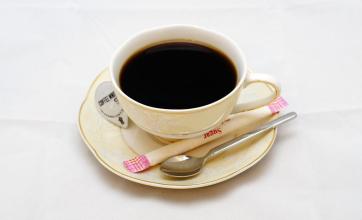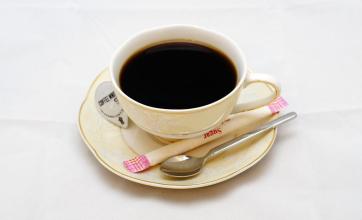Can the blended coffee beans be used to drop ice?
To make a recipe, the best way to start is to know the basic roles in the recipe and fill in each position according to the attributes of the coffee beans. The following will give you a general classification, the world-famous coffee beans defined attribute features, so that you can follow this principle to make their own formula.
1. Coffee beans with strong character (Big Classic Coffee): this kind of coffee double usually provides good consistency, strong acidity, classic flavor and aroma. This type of coffee beans are not suitable for use as a base because the style is too strong, but in a soft base, it can add strength and vitality to the formula.
Coffee beans in this category include:
Coffee beans from Antigua producing areas (Antigua), Cobain producing areas (Coban), Mini Tenan Fruit producing areas (Huehuetenango) and other highland producing areas in Guatemala. Coffee beans from Tara Zhu (Tarrezu), Sanshui River (Tres Rios) and other highland producing areas in Costa Rica. Colombian coffee beans.
two。 Flavor soft coffee beans (Softer Classic Coffee): this type of coffee beans are great coffee beans for blending. The base made from this type of coffee beans is so stable that it does not change too much. it also provides the consistency and appropriate acidity in the formula. Roasting these coffee beans to a deep baking will provide better sweetness and chocolate flavour. Because of this characteristic, this type of coffee beans has become the first choice for making recipes.
This category of coffee beans is mainly produced from:
Mexico's Oaxaca, Coatepec, Chiapas and Tapachula districts.
Several members of the Republic of Nepal (also known as Santo Domingo).
The Chanchamayo district of Peru.
Brazil's Santos coffee beans (Brazil Santos).
Panama
El Salvador
Nicaragua
Washing treatment of Arabica coffee beans in India
3. Coffee beans with distinctive exotic flavor (Highlight and Exotic Coffee): the acidity of this type of coffee beans, usually with strong fruity aromas and acidity of red wine texture. Outstanding personality is therefore not suitable as a base for the formula, but this type of coffee is the best contributor to stimulating change in the formula.
Coffee beans in this category include:
In the Harald region of Ethiopia, this game-rich and complex dried coffee bean contributes to the sweetness, fruity, berry notes and strong acidity of the formula.
The mocha beans of Yemen are similar to the coffee beans of Ethiopia's Hakar region, but they are not as dense as Ethiopian Harald coffee beans.
Ethiopian washed coffee beans, such as Yega Schiffe and washed Sidamo coffee, provide excellent floral and citrus notes, a flavor that can be preserved even if the beans are deeply roasted.
The coffee beans in this region of Kenya offer strong acidity and a fruity, berry-flavored red wine taste.
Coffee beans in Zimbabwe are very close to Kenyan coffee beans, but are slightly weaker in strength.
The Bugisu region of Uganda (Bugisu) is similar to Kenyan coffee beans, but slightly weaker.
Papua AA, A, X, etc., provide strong acidity and complex citrus notes.

Important Notice :
前街咖啡 FrontStreet Coffee has moved to new addredd:
FrontStreet Coffee Address: 315,Donghua East Road,GuangZhou
Tel:020 38364473
- Prev

How to confirm the distribution of the proportion of coffee blending
It is understood that Arabica coffee beans are harsh on planting conditions, they need to grow at higher elevations, fertile soil, sufficient moisture, moderate sunshine and shade conditions, and their ability to resist diseases and insect pests is poor; while Robusta, this kind of coffee beans, known as stout beans, can be grown at low elevations, and it is more resistant to diseases and insect pests. Maybe coffee lovers
- Next

Introduction to the types and proportions of mixed coffee
The type of mixed coffee due to the different types of coffee beans, the mixed coffee is also different in taste, so there are different kinds of mixed coffee. 1. Mixed coffee formula with balanced taste: Guatemala SHB (30%), Mexico AL (30%), Brazil NO.219 (20%), Kilimanjaro AA (10%). The top mixed coffee is sour, bitter and fragrant.
Related
- Does Rose Summer choose Blue, Green or Red? Detailed explanation of Rose Summer Coffee plots and Classification in Panamanian Jade Manor
- What is the difference between the origin, producing area, processing plant, cooperative and manor of coffee beans?
- How fine does the espresso powder fit? how to grind the espresso?
- Sca coffee roasting degree color card coffee roasting degree 8 roasting color values what do you mean?
- The practice of lattes: how to make lattes at home
- Introduction to Indonesian Fine Coffee beans-- Java Coffee producing area of Indonesian Arabica Coffee
- How much will the flavor of light and medium roasted rose summer be expressed? What baking level is rose summer suitable for?
- Introduction to the characteristics of washing, sun-drying or wet-planing coffee commonly used in Mantenin, Indonesia
- Price characteristics of Arabica Coffee Bean Starbucks introduction to Manning Coffee Bean Taste producing area Variety Manor
- What is the authentic Yega flavor? What are the flavor characteristics of the really excellent Yejasuffi coffee beans?

